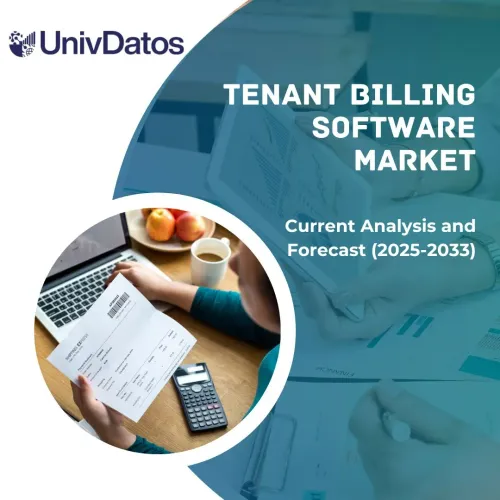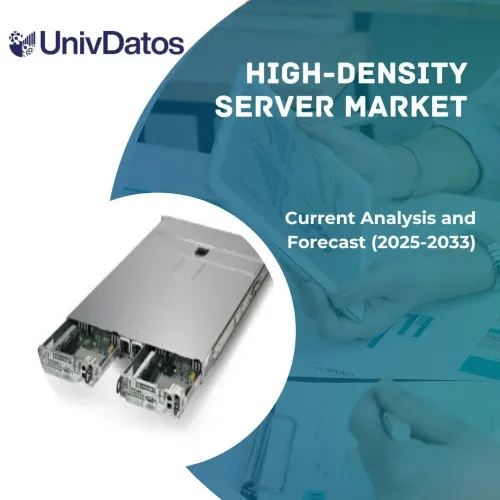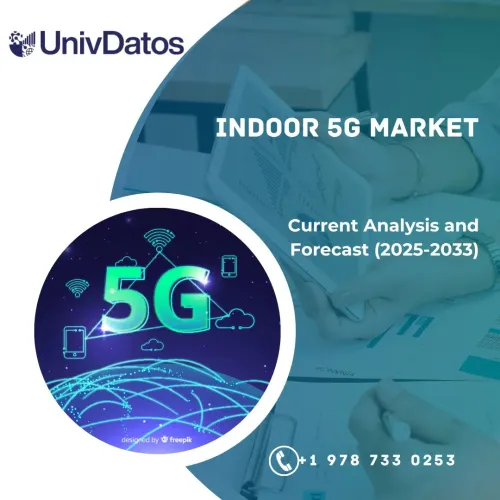Рынок промышленного IoT в регионе MENA: текущий анализ и прогноз (2023–2030 гг.)
Акцент на компонентах (оборудование, программное обеспечение и услуги); применении (SCADA, PLM, системы управления дистрибуцией, дистанционный мониторинг пациентов и другие); и конечной отрасли (производство, транспорт, нефтегазовая отрасль, здравоохранение, коммунальные услуги и другие); страны
География:
Индустрия:
Последнее обновление:
May 2024
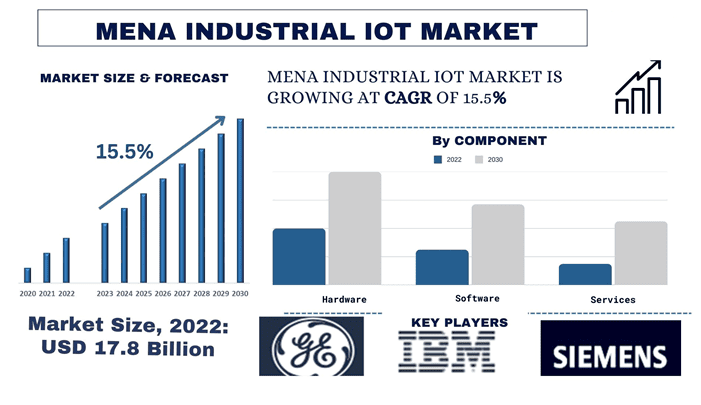
Объем рынка промышленного IoT в регионе MENA в 2022 году оценивался в 17,8 миллиарда долларов США, и ожидается, что он будет расти стабильными темпами, примерно 15,5% в прогнозируемый период (2023–2030 гг.).Промышленный Интернет вещей (IIoT) относится к взаимосвязи промышленных устройств и систем через Интернет для обеспечения сбора, обмена данными и анализа. Эта взаимосвязанность позволяет отраслям контролировать, управлять и оптимизировать свои процессы в режиме реального времени, что приводит к повышению производительности и снижению затрат. Ожидается, что рынок промышленного IoT в регионе MENA будет расти со среднегодовым темпом роста (CAGR) в 15,5% в течение прогнозируемого периода. Регион MENA является развивающимся рынком для промышленных IoT, и такие страны, как Объединенные Арабские Эмираты (ОАЭ), Саудовская Аравия, Катар и Египет, лидируют с точки зрения развития инфраструктуры. Эти страны вкладывают значительные средства в создание современных промышленных IoT для удовлетворения растущего спроса со стороны различных отраслей, включая финансы, телекоммуникации, здравоохранение и государственный сектор.
Некоторые из основных игроков, действующих на рынке, включают ABB, General Electric, IBM Corporation, Intel Corporation, Rockwell Automation, Inc, Siemens, Microsoft, Cisco Systems, Inc, NEC Corporation и KUKA AG.
Представленная в отчете информация
«Среди компонентов сегмент оборудования продемонстрировал значительный рост в 2022 году».
На основе компонентов рынок сегментирован на оборудование, программное обеспечение и услуги. Сегмент оборудования лидировал на рынке в 2022 году, что обусловлено растущим спросом на датчики (например, датчики температуры и давления), промышленных роботов для автоматизированных задач и коммуникационные шлюзы для передачи данных. Ожидается, что это доминирование сохранится в ближайшем будущем благодаря продолжающимся инвестициям в развитие инфраструктуры и проекты промышленной автоматизации. Однако ожидается, что сегмент программного обеспечения продемонстрирует самый быстрый темп роста из-за растущей потребности в платформах анализа данных, разработке приложений промышленного IoT и решениях для управления устройствами. С другой стороны, услуги включают в себя интеграцию, развертывание и обслуживание решений промышленного IoT, и ожидается, что этот сегмент будет стабильно расти, поскольку компании ищут экспертную помощь в преодолении сложностей внедрения промышленного IoT.
«Среди приложений сегмент SCADA продемонстрировал значительный рост на рынке».На основе приложений рынок промышленного IoT в регионе MENA сегментирован на SCADA (диспетчерское управление и сбор данных), PLM (управление жизненным циклом продукта), системы управления дистрибуцией, дистанционный мониторинг пациентов и другие. Сегмент SCADA лидировал на рынке в 2022 году благодаря широкому применению в различных отраслях, таких как нефтегазовая промышленность, производство электроэнергии и обрабатывающая промышленность. Например, системы SCADA используются для мониторинга трубопроводов в нефтегазовой отрасли, обеспечивая данные в реальном времени о давлении, скорости потока и потенциальных утечках, что обеспечивает профилактическое обслуживание и повышение операционной эффективности.
«Среди отраслей конечных пользователей сегмент обрабатывающей промышленности продемонстрировал значительный рост на рынке».На основе конечной отрасли рынок сегментирован на производство, транспорт, нефтегазовую отрасль, здравоохранение, коммунальные услуги и другие. Сегмент обрабатывающей промышленности лидировал на рынке промышленного IoT в регионе MENA в 2022 году, что обусловлено такими факторами, как растущий спрос на автоматизацию, эффективность производства и контроль качества. Например, компании автомобилестроительного сектора внедряют решения промышленного IoT для отслеживания сборочных линий, мониторинга состояния оборудования и оптимизации производственных процессов. Это позволяет сократить сроки выполнения заказов, уменьшить время простоя и улучшить качество продукции.
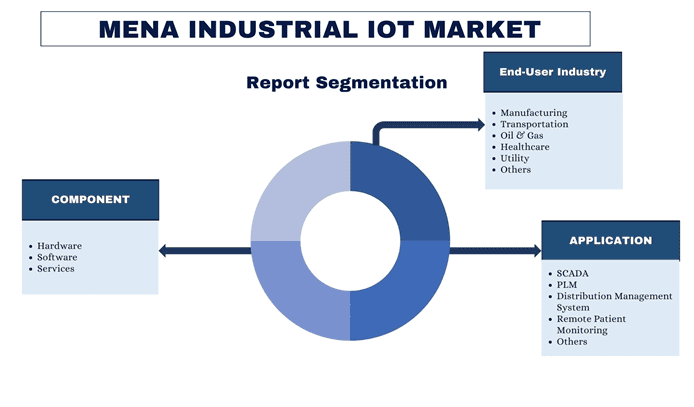
«Саудовская Аравия имеет значительную долю на рынке промышленного IoT в регионе MENA в 2022 году».
Саудовская Аравия лидировала на рынке в 2022 году. Рынок промышленного IoT Саудовской Аравии быстро растет и диверсифицируется. Кроме того, план «Видение 2030» правительства Саудовской Аравии уделяет особое внимание промышленной диверсификации и технологическому прогрессу, что способствует росту промышленного IoT. Такие отрасли, как нефтегазовая и обрабатывающая промышленность, все чаще внедряют промышленный IoT для профилактического обслуживания, удаленного мониторинга и оптимизации операций.
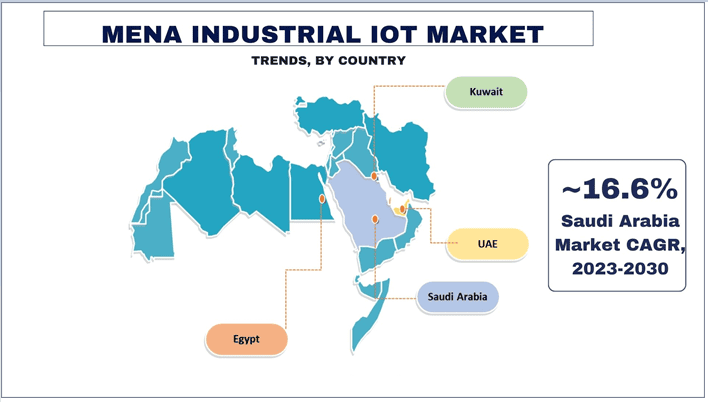
Обзор отчета о рынке промышленного IoT в регионе MENA
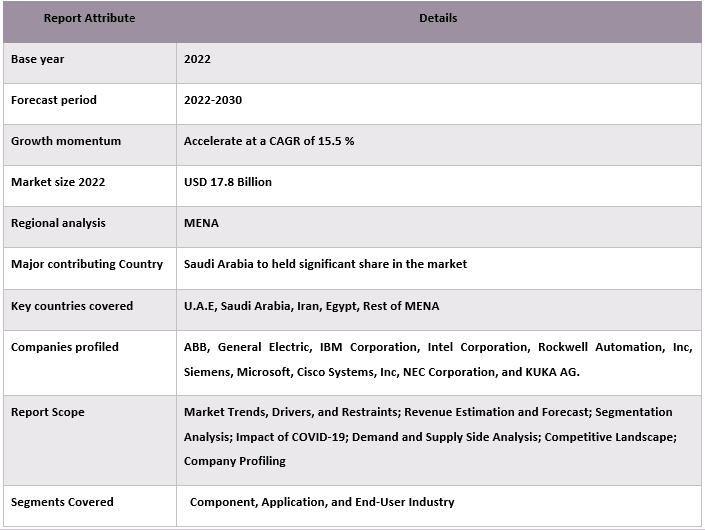
Причины для покупки этого отчета:
- Исследование включает анализ размеров рынка и прогнозирования, подтвержденный проверенными ключевыми отраслевыми экспертами.
- Отчет представляет краткий обзор общей деятельности отрасли с первого взгляда.
- Отчет охватывает углубленный анализ выдающихся отраслевых компаний с основным акцентом на ключевых финансовых показателях бизнеса, портфелях продуктов, стратегиях расширения и недавних разработках.
- Детальное изучение драйверов, ограничений, ключевых тенденций и возможностей, преобладающих в отрасли.
- Исследование всесторонне охватывает рынок по различным сегментам.
- Углубленный анализ отрасли на региональном уровне.
Параметры настройки:
Рынок промышленного IoT в регионе MENA может быть дополнительно настроен в соответствии с требованиями или любым другим сегментом рынка. Кроме того, UMI понимает, что у вас могут быть свои собственные бизнес-потребности, поэтому не стесняйтесь обращаться к нам, чтобы получить отчет, который полностью соответствует вашим требованиям.
Содержание
Методология исследования для анализа рынка промышленного IoT в регионе MENA
(2023–2030 гг.)
Анализ исторического рынка, оценка текущего рынка и прогнозирование будущего рынка промышленного IoT в регионе MENA были тремя основными этапами, предпринятыми для создания и анализа внедрения промышленного IoT в регионе MENA. Было проведено исчерпывающее вторичное исследование для сбора исторических данных о рынке и оценки текущего размера рынка. Во-вторых, для проверки этих данных были приняты во внимание многочисленные выводы и предположения. Кроме того, были проведены исчерпывающие первичные интервью с отраслевыми экспертами по всей цепочке создания стоимости рынка промышленного IoT в регионе MENA. После предположений и подтверждения данных о рынке посредством первичных интервью мы применили подход сверху вниз/снизу вверх для прогнозирования полного размера рынка. После этого были приняты методы разбивки рынка и триангуляции данных для оценки и анализа размера рынка сегментов и подсегментов соответствующей отрасли. Подробная методология объясняется ниже:
Анализ размера исторического рынка
Шаг 1: Углубленное изучение вторичных источников:
Было проведено подробное вторичное исследование для получения исторических размеров рынка промышленного IoT в регионе MENA из внутренних источников компании, таких какгодовые отчеты и финансовая отчетность, презентации о результатах деятельности, пресс-релизы и т. д.,и внешних источников, включаяжурналы, новости и статьи, правительственные публикации, публикации конкурентов, отраслевые отчеты, сторонние базы данных и другие заслуживающие доверия публикации.
Шаг 2: Сегментация рынка:
После получения исторических размеров рынка промышленного IoT в регионе MENA мы провели подробный вторичный анализ для сбора исторических данных о рынке и долей для различных сегментов и подсегментов для основных регионов. Основные сегменты включены в отчет, такие как Компонент, Применение и Отрасль конечного пользователя. Кроме того, был проведен анализ на уровне стран для оценки общего внедрения моделей тестирования в этом регионе.
Шаг 3: Факторный анализ:
После получения исторических размеров рынка различных сегментов и подсегментов мы провели подробныйфакторный анализдля оценки текущего размера рынка промышленного IoT в регионе MENA. Кроме того, мы провели факторный анализ, используя зависимые и независимые переменные, такие как увеличение спроса на возобновляемые источники энергии. Был проведен тщательный анализ сценариев спроса и предложения с учетом ведущих партнерств, слияний и поглощений, расширения бизнеса и запуска продуктов на рынке промышленного IoT в регионе MENA.
Оценка и прогноз текущего размера рынка
Определение текущего размера рынка:Основываясь на практических выводах из вышеуказанных 3 этапов, мы пришли к текущему размеру рынка, ключевым игрокам на рынке промышленного IoT в регионе MENA и долям рынка сегментов. Все требуемые доли в процентах и разбивки рынка были определены с использованием вышеуказанного вторичного подхода и были проверены посредством первичных интервью.
Оценка и прогнозирование:Для оценки и прогнозирования рынка были присвоены веса различным факторам, включая драйверы и тенденции, ограничения и возможности, доступные для заинтересованных сторон. После анализа этих факторов были применены соответствующие методы прогнозирования, т. е. восходящий/нисходящий подход, для получения прогноза рынка на 2028 год для различных сегментов и подсегментов на основных рынках MENA. Методология исследования, принятая для оценки размера рынка, включает:
- Размер рынка отрасли с точки зрения выручки (USD) и уровень внедрения рынка промышленного IoT MENA на основных рынках внутри страны.
- Все процентные доли, разбивки и деления сегментов и подсегментов рынка
- Ключевые игроки на рынке промышленного IoT MENA с точки зрения предлагаемых продуктов. Кроме того, стратегии роста, принятые этими игроками для конкуренции на быстрорастущем рынке.
Проверка размера и доли рынка
Первичные исследования:Были проведены углубленные интервью с ключевыми лидерами общественного мнения (KOL), включая руководителей высшего звена (CXO/VP, руководители отделов продаж, руководители отделов маркетинга, руководители отделов эксплуатации, региональные руководители, руководители стран и т. д.) в основных регионах. Затем результаты первичных исследований были обобщены, и был проведен статистический анализ для подтверждения заявленной гипотезы. Данные первичных исследований были объединены с результатами вторичных исследований, превращая информацию в практические выводы.
Основные заинтересованные стороны рынка промышленного IoT в регионе MENA
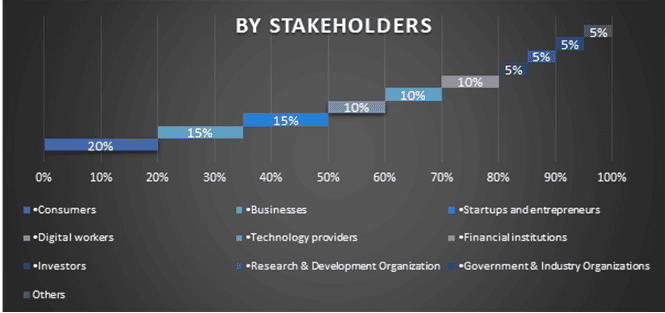
Инженерия рынка
Метод триангуляции данных был использован для завершения общей оценки рынка и получения точных статистических данных для каждого сегмента и подсегмента рынка промышленного IoT MENA. Данные были разделены на несколько сегментов и подсегментов после изучения различных параметров и тенденций в областях компонентов транспортных средств, приложений и отраслей конечных пользователей на рынке промышленного IoT MENA.
Основная цель исследования рынка промышленного IoT MENA
В исследовании были определены текущие и будущие тенденции рынка промышленного IoT MENA. Инвесторы могут получить стратегическое представление для обоснования своих инвестиционных решений на основе качественного и количественного анализа, проведенного в исследовании. Текущие и будущие тенденции рынка определили общую привлекательность рынка на региональном уровне, предоставляя платформу для участников отрасли для использования неиспользованного рынка, чтобы получить выгоду от преимущества первого движителя. Другие количественные цели исследований включают:
- Проанализировать текущий и прогнозируемый размер рынка промышленного IoT MENA в стоимостном выражении (USD). Также проанализировать текущий и прогнозируемый размер рынка различных сегментов и подсегментов.
- Сегменты в исследовании включают такие области, как компонент, приложение и отрасль конечного пользователя.
- Определить и проанализировать нормативную базу для промышленного IoT MENA
- Проанализировать цепочку создания стоимости с присутствием различных посредников, а также проанализировать поведение клиентов и конкурентов отрасли.
- Проанализировать текущий и прогнозируемый размер рынка промышленного IoT MENA для основного региона.
- Профили компаний рынка промышленного IoT MENA и стратегии роста, принятые игроками рынка для удержания на быстрорастущем рынке.
- Углубленный анализ отрасли на региональном уровне.
Часто задаваемые вопросы Часто задаваемые вопросы
В1: Каков текущий размер рынка и потенциал роста рынка промышленного IoT в регионе MENA?
В2: Какие факторы способствуют росту рынка промышленного IoT в регионе MENA?
В3: Какой сегмент занимает наибольшую долю рынка промышленного IoT в регионе MENA по компонентам?
В4: В какой стране будет наблюдаться значительный рост рынка промышленного IoT в регионе MENA?
В5: Кто является ключевыми игроками, работающими на рынке промышленного IoT в регионе MENA?
Связанные Отчеты
Клиенты, купившие этот товар, также купили


